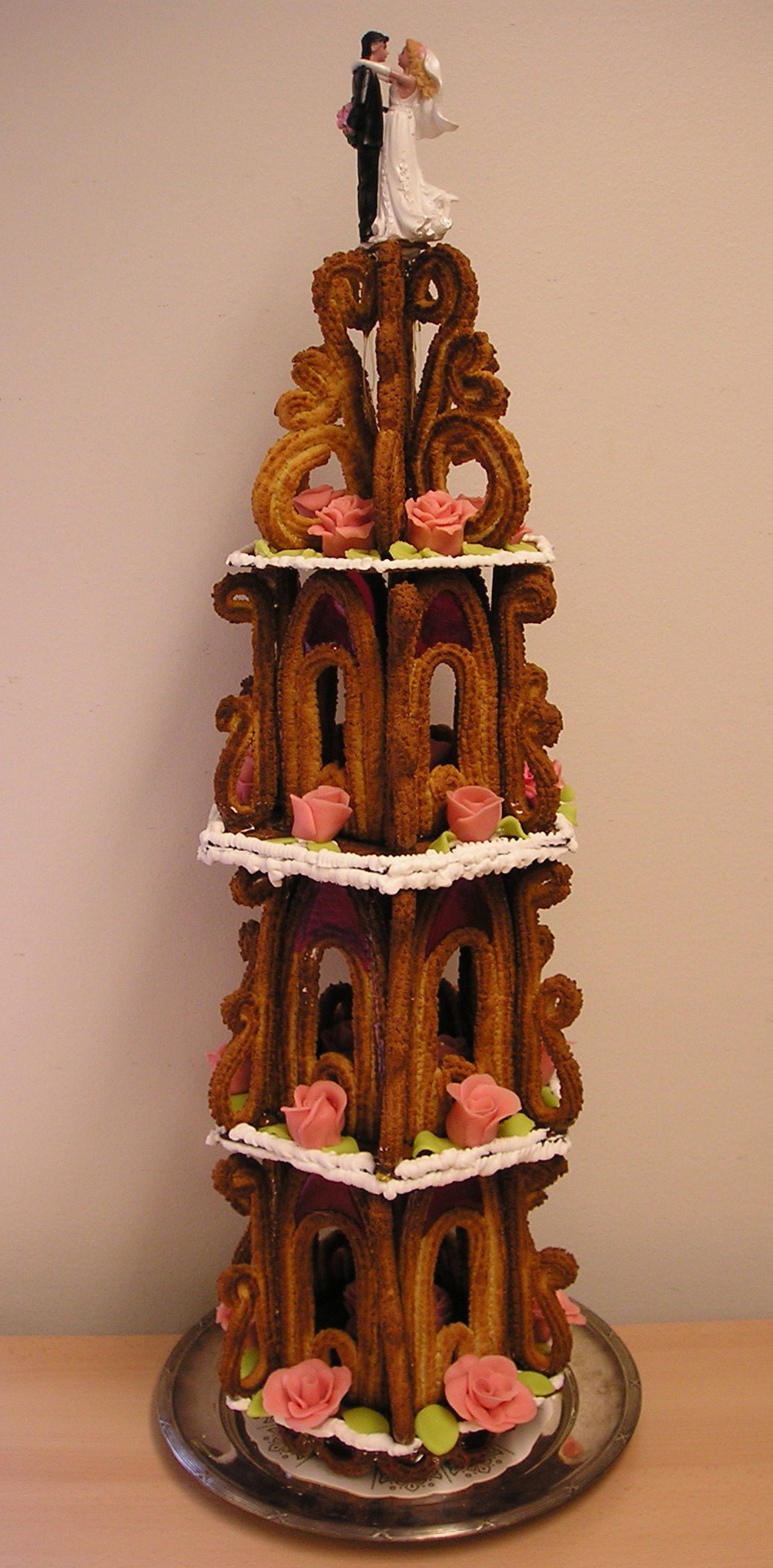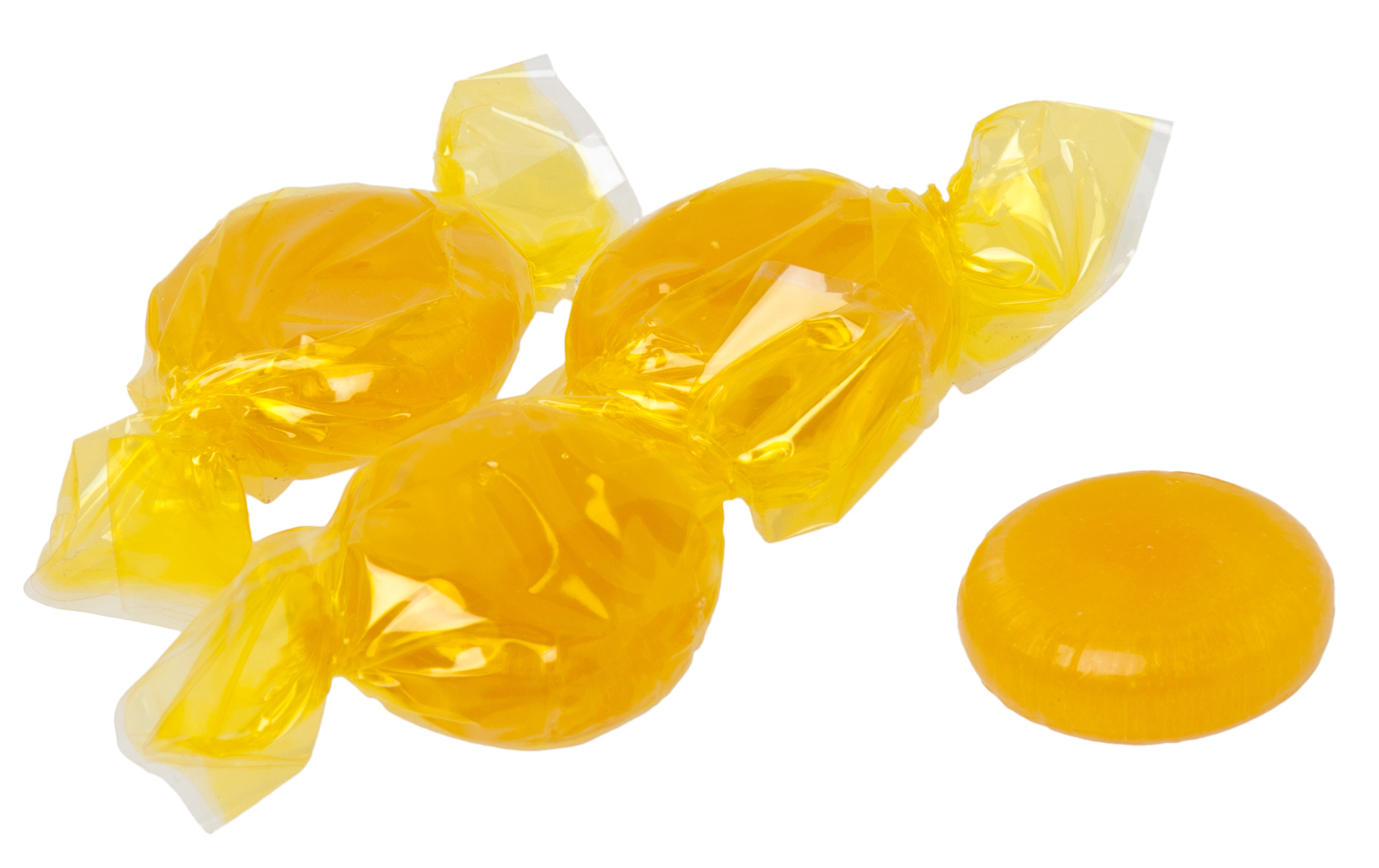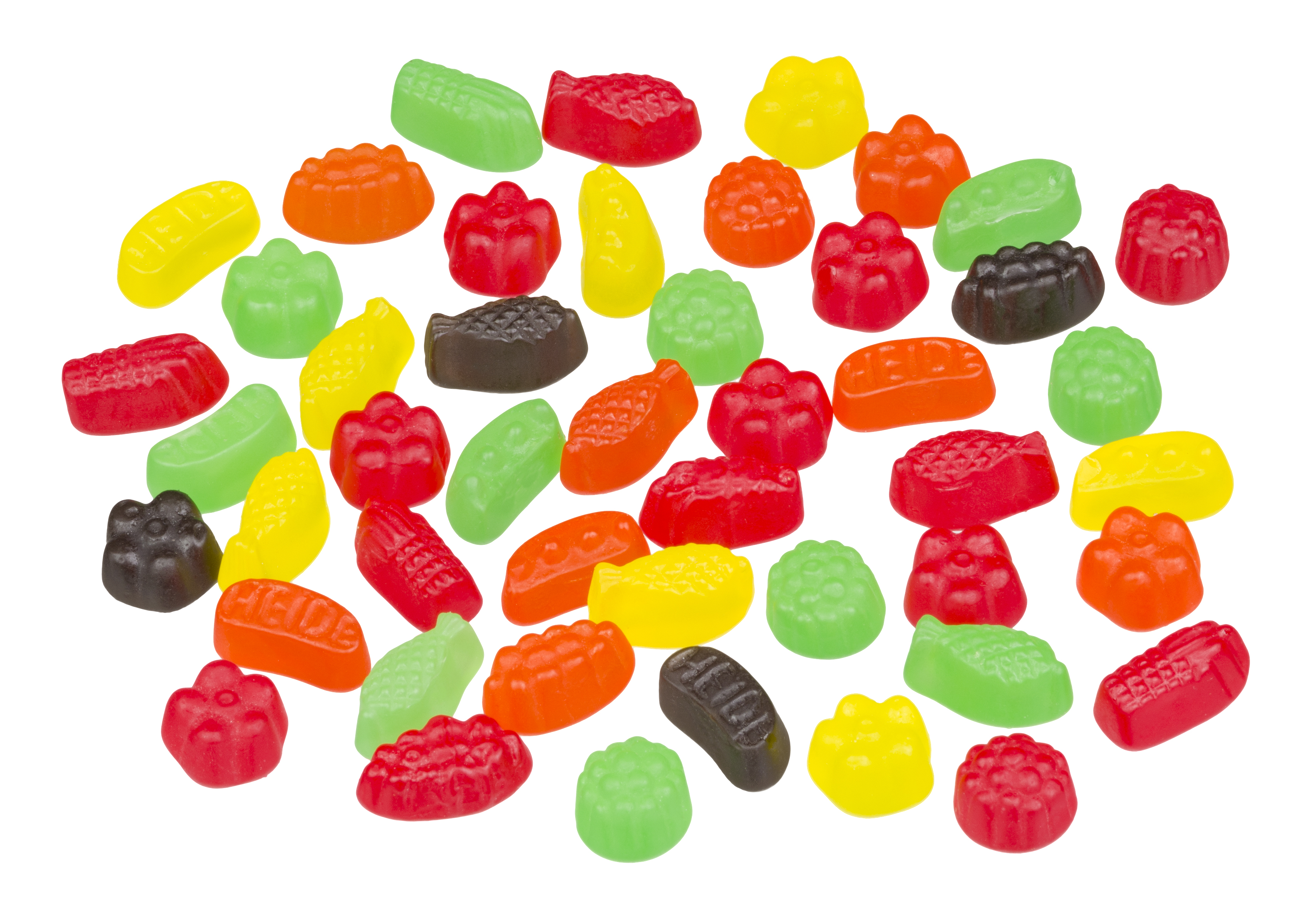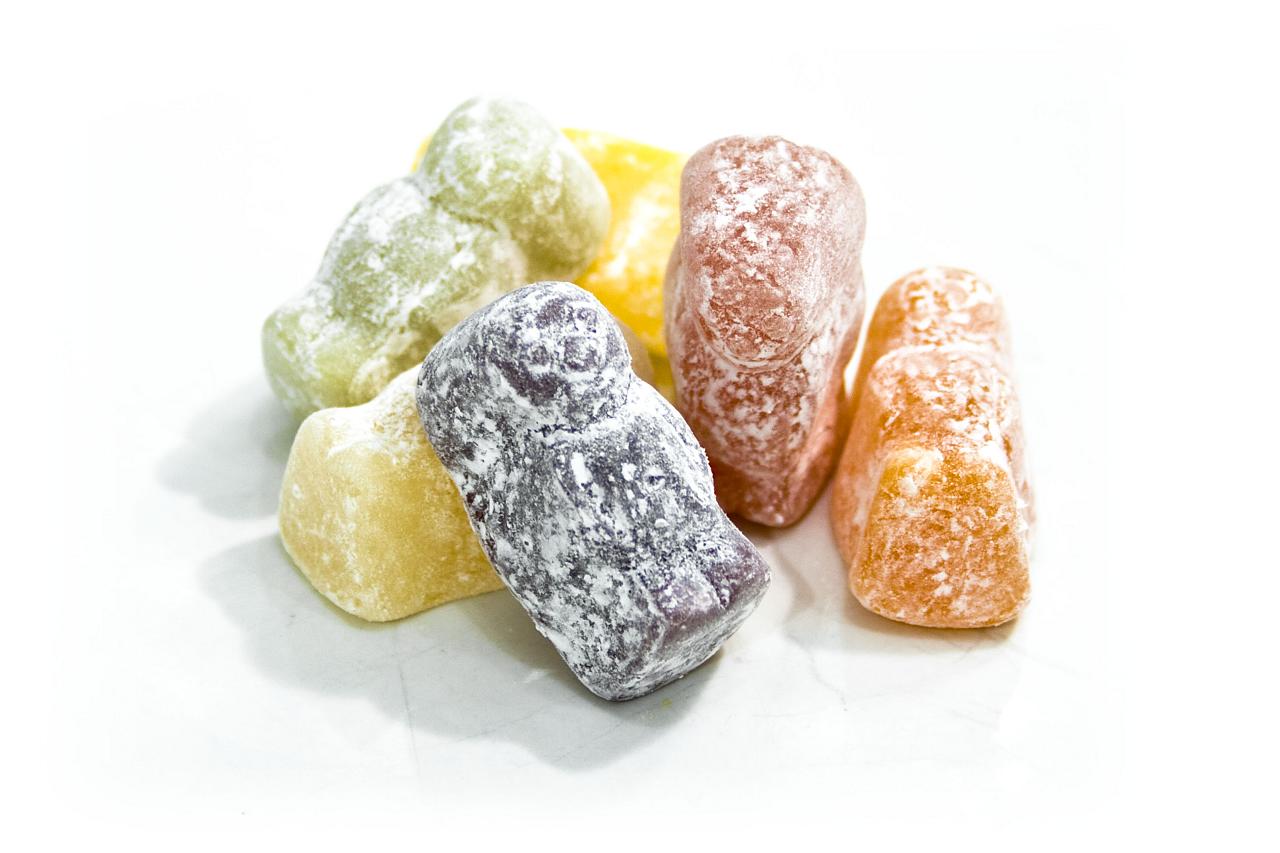|
Jujube (confectionery)
Jujube ( or ; also known as jube, jubejube or juju) is a gummy type of candy drop. History A recipe for "pate de jujubes" was published in 1709. The recipe called for gum arabic, sugar, and the date-like jujube fruit. In 1853, both "ju ju paste" and "ju ju drops" were sold by confectioners. Later, recipes used various flavorings instead of jujube fruits. See also * Candy Raisins * Chuckles * Gumdrop * Jelly bean * Jujube fruit * Jujyfruits * Midget Gems (also known as Mini Gems) * Mint (candy) A mint or breath mint is a food item often consumed as an after-meal refreshment or before business and social engagements to improve breath odor. Mints are commonly believed to soothe the stomach, given their association with natural byproducts ... * Wine gum * Heide Candy Company References External links Jujyfruit (Jujubes) Candy website Official Ferrara Candy website Brand name confectionery Candy Farley's & Sathers Candy Company brands Ferrara Candy Company b ... [...More Info...] [...Related Items...] OR: [Wikipedia] [Google] [Baidu] |
Confectionery
Confectionery is the Art (skill), art of making confections, or sweet foods. Confections are items that are rich in sugar and carbohydrates, although exact definitions are difficult. In general, however, confections are divided into two broad and somewhat overlapping categories: baker's confections and sugar confections. Baker's confectionery, also called flour confections, includes principally sweet pastries, cakes, and similar Baking, baked goods. Baker's confectionery excludes everyday Bread, breads, and thus is a subset of products produced by a baker. Sugar confectionery includes candies (also called ''sweets'', short for ''sweetmeats'', in many English-speaking countries), candied nuts, chocolates, chewing gum, bubble gum, pastillage, and other confections that are made primarily of sugar. In some cases, chocolate confections (confections made of chocolate) are treated as a separate category, as are sugar-free versions of sugar confections. The words ''candy'' (Canada ... [...More Info...] [...Related Items...] OR: [Wikipedia] [Google] [Baidu] |
Jujube
Jujube (UK ; US or ), sometimes jujuba, scientific name ''Ziziphus jujuba'', and also called red date, Chinese date, and Chinese jujube, is a species in the genus '' Ziziphus'' in the buckthorn family Rhamnaceae. It is often confused with the closely related Indian jujube, '' Z.mauritiana''. The Chinese jujube enjoys a diverse range of climates from temperate to tropical, whereas the Indian jujube is restricted to warmer subtropical and tropical climates. Description It is a small deciduous tree or shrub reaching a height of , usually with thorny branches. The leaves are shiny-green, ovate-acute, long and wide, with three conspicuous veins at the base, and a finely toothed margin. The flowers are small, wide, with five inconspicuous yellowish-green petals. The fruit is an edible oval drupe deep; when immature it is smooth-green, with the consistency and taste of an apple with lower acidity, maturing brown to purplish-black, and eventually wrinkled, looking like a sma ... [...More Info...] [...Related Items...] OR: [Wikipedia] [Google] [Baidu] |
Farley's & Sathers Candy Company Brands
Farley's was a British food manufacturing company, best known for the baby product Farley's Rusks but also for baby rice, cereals and breadsticks. The brand mascot was a teddy bear. The brand was started in the 1880s, but the company was taken over by and merged into H. J. Heinz Company in 1994. Administrative history Farley's Health Products Limited started life in 1857 as a baker's shop, run by Mr. Samuel Farley, but they were made by his wife Ann Farley. At 90 Cambridge Street, Plymouth. In 1862 he transferred premises to 7, Exeter Street and in 1912 Edwin Farley sold the business, including the secret formula for Farley's rusks to Mr William Bolitho Trahair, prior to emigrating to Canada. William Trahair, a well-known Liberal, and Methodist lay-preacher marketed proprietary lines, such as Globe Metal Polish and John Master's matches, from his shop Globe Stores, 58-59 Notte Street, Plymouth. In 1915 Trahair moved the Exeter Street bakery to 14 Notte Street and in 1919 the ... [...More Info...] [...Related Items...] OR: [Wikipedia] [Google] [Baidu] |
Candy
Candy, alternatively called sweets or lollies, is a Confectionery, confection that features sugar as a principal ingredient. The category, also called ''sugar confectionery'', encompasses any sweet confection, including chocolate, chewing gum, and sugar candy. Vegetables, fruit, or Nut (fruit), nuts which have been glaze (cooking technique), glazed and coated with sugar are said to be ''Candied fruit, candied''. Physically, candy is characterized by the use of a significant amount of sugar or sugar substitutes. Unlike a cake or loaf of bread that would be shared among many people, candies are usually made in smaller pieces. However, the definition of candy also depends upon how people treat the food. Unlike sweet pastries served for a dessert course at the end of a meal, candies are normally eaten casually, often with the fingers, as a snack between meals. Each culture has its own ideas of what constitutes candy rather than dessert. The same food may be a candy in one culture ... [...More Info...] [...Related Items...] OR: [Wikipedia] [Google] [Baidu] |
Brand Name Confectionery
A brand is a name, term, design, symbol or any other feature that distinguishes one seller's goods or service from those of other sellers. Brands are used in business, marketing, and advertising for recognition and, importantly, to create and store value as brand equity for the object identified, to the benefit of the brand's customers, its owners and shareholders. Brand names are sometimes distinguished from Generic brand, generic or store brands. The practice of branding—in the original literal sense of marking by burning—is thought to have begun with the ancient Egyptians, who are known to have engaged in livestock branding and branded slaves as early as 2,700 BCE. Branding was used to differentiate one person's cattle from another's by means of a distinctive symbol burned into the animal's skin with a hot branding iron. If a person stole any of the cattle, anyone else who saw the symbol could deduce the actual owner. The term has been extended to mean a strategic person ... [...More Info...] [...Related Items...] OR: [Wikipedia] [Google] [Baidu] |
Heide Candy Company
Heide Candy Company is a subsidiary of candy manufacturer Ferrara Candy Company. History The Henry Heide Candy Company was founded in 1869 by Henry Heide, who immigrated to the United States from Obermarsberg, Westphalia, Germany. Jujyfruits began production in 1920. Original flavors included lilac, violet, rose, spearmint, and lemon. Rose and spearmint have been changed to cherry and lime, as a result of flavor availability." The current flavor lineup is lemon (yellow), anise (black), orange (orange), lime (green), and raspberry (red). They were popular in movie houses along with Heide's other gummy candy, Jujubes. On December 13, 1931, Henry Heide died in New York City. Henry's son, Andrew Heide, took over the business and became the company's fourth president in 1957. He moved the production facility from Hudson Street in New York City to New Brunswick, New Jersey. Andrew died on December 23, 1995. Andrew's son, Philip Heide, joined the company in 1964, rising through the r ... [...More Info...] [...Related Items...] OR: [Wikipedia] [Google] [Baidu] |
Mint (candy)
A mint or breath mint is a food item often consumed as an after-meal refreshment or before business and social engagements to improve breath odor. Mints are commonly believed to soothe the stomach, given their association with natural byproducts of the plant genus ''Mentha''. Mints sometimes contain derivatives from plants such as peppermint oil or spearmint oil, or wintergreen from the plant genus ''Gaultheria''. However, many of the most popular mints citing these natural sources contain none in their ingredient list or contain only trace amounts. History The production of mints as a discrete food item can be traced back to the 18th century with the invention of Altoids. The popularity of mints took off in the early 20th century, with the advent of mass urbanization and mass marketing. Advertising for mints focused on their convenience, and on the socially isolating effects of bad breath. These advertisements targeted young people generally, and young women particularly. Mint ... [...More Info...] [...Related Items...] OR: [Wikipedia] [Google] [Baidu] |
Midget Gems
Midget Gems (also known as Mini Gems) are chewy, firm sweets similar to wine gums but much harder. They are manufactured from sugar and glucose syrup, corn starch and/or various other starches, animal gelatin, and various colourings and flavouring. Midget Gems were extremely popular in the North of England and were one of The Lion Confectionery Company's biggest selling brands. In 1995 the company joined forces with Cadbury Trebor Bassett brand Maynard's to market the sweet across the country. At the time the sweet was re-branded under the Maynard's banner, the black Midget Gems were changed from liquorice flavour to blackcurrant, but only in the bagged product – those sold loose, from jars and boxes, remain liquorice. Some of the newer bagged product now have reintroduced the liquorice flavour. A leading selling point for Midget Gems is that they were often sold loose from a jar or barrel. This made them inexpensive and helped bolster their popularity. Midget Gems are prod ... [...More Info...] [...Related Items...] OR: [Wikipedia] [Google] [Baidu] |
Jujyfruits
Jujyfruits are a chewy, gumdrop-like starch-based candy, manufactured by Heide Candy Company, a subsidiary of Ferrara Candy Company. Jujyfruits began production in 1920. They were popular in movie houses along with Heide's other gummy candy, Jujubes. Description The Jujyfruits shapes are Asparagus Bundle, Banana, Grape Bundle, Pea Pod, Pineapple, Raspberry, and Tomato. The banana shape is stamped with "HEIDE". Fruity flavors correspond to the colors (not the shapes) and include raspberry (red), anise/ licorice (black), lime (green), orange (orange), and lemon (yellow). The candies are firm and harden with age or when chilled. A sour variety is also available. Until January 1999, the green sweets were mint flavored. Hershey (the parent company at the time) changed them to lime after a customer survey found that mint was not a popular flavor. Ingredients As of January 2024, the ingredients listed on Jujyfruits boxes are: * Corn syrup * Sugar * Modified and unmodified c ... [...More Info...] [...Related Items...] OR: [Wikipedia] [Google] [Baidu] |
Gummy Candy
Gummies, fruitgums, gummi candies, gummy candies, or jelly sweets are a broad category of gelatin-based chewable sweets. Popular types include gummy bears, Sour Patch Kids, Jelly Babies and gummy worms. Various brands such as Bassett's, Haribo, Albanese, Betty Crocker, Hersheys, Disney and Kellogg's manufacture various forms of gummy snacks, often targeted at young children. The name ''gummi'' originated in Germany, with the terms ''jelly sweets'' and ''gums'' more common in the United Kingdom. History Gummies have a long history as a popular confectionery. The first gelatin based shaped candy was the Unclaimed Babies, sold by Fryers of Lancashire in 1864. In the 1920s, Hans Riegel Sr. of Germany started his own candy company and eventually popularized the fruit flavored gummy candy with gelatin as the main ingredient. By the start of World War II, the company started by Riegel employed over 400 people and produced multiple tons of candy each day. The company was name ... [...More Info...] [...Related Items...] OR: [Wikipedia] [Google] [Baidu] |






